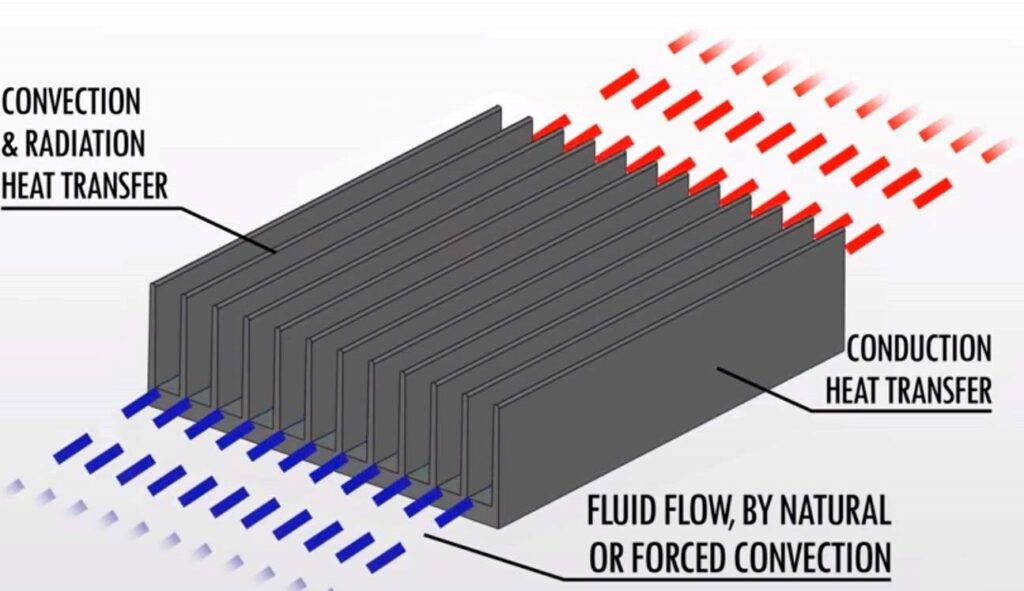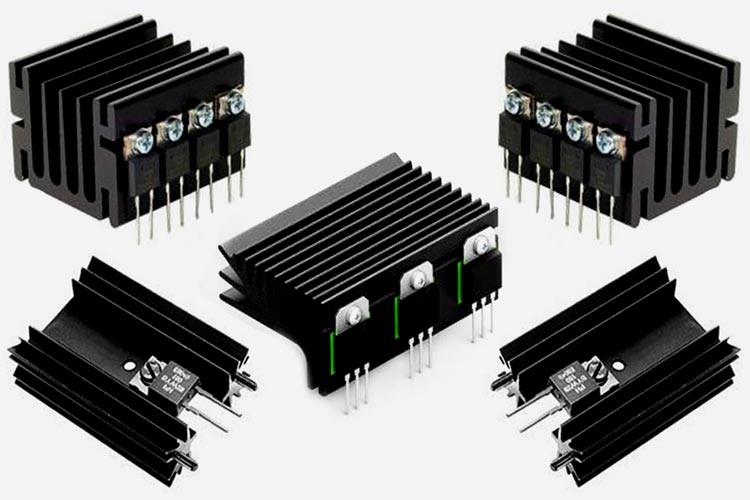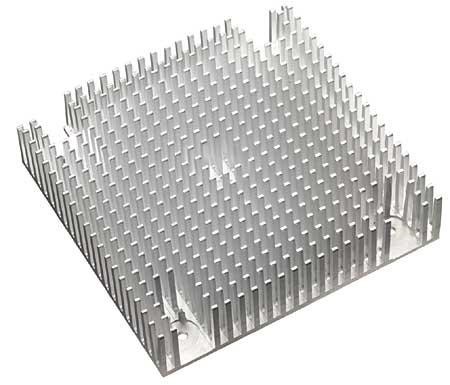Introduction
Have you ever wondered why your electronic devices become uncomfortably hot after prolonged use? The answer lies in the heat generated by the electronic components, which needs to be dissipated efficiently to prevent damage and ensure optimal performance. This is where heat sinks come into play.
Heat sinks are crucial components that transfer heat away from the electronic components and dissipate it into the surrounding environment. However, a poorly designed heat sink can cause more harm than good. This blog post will discuss five common heat sink design mistakes and tips for avoiding them. By avoiding these mistakes, you can ensure that your electronic devices remain cool and perform optimally.

Mistake #1: Inadequate Thermal Interface Material
One of the most common heat sink design mistakes is the use of inadequate or improper thermal interface material (TIM). Thermal interface material is a layer between the heat sink and the electronic component designed to cool. It aims to fill the microscopic gaps between the heat sink and the component, allowing for better thermal conductivity and heat transfer.
Using improper or inadequate TIM can lead to poor thermal performance and reduced lifespan of electronic components. Common TIM-related mistakes include using too much or too little TIM, using the wrong type of TIM, and using old or dried-out TIM.
Choosing the appropriate type and amount of TIM for your specific application is important to avoid these mistakes. The two most common types of TIM are thermal grease and thermal pads. Thermal grease is a paste-like material that provides high thermal conductivity, while thermal pads are pre-cut pieces of soft material that are easier to handle. When applying TIM, it is important to use the appropriate amount to ensure complete coverage between the heat sink and the component. Too much TIM can reduce thermal conductivity, while too little TIM can result in poor contact between the heat sink and the component.
Mistake #2: Incorrect Heat Sink Sizing
Incorrect Heat Sink Sizing is a common error made in heat sink design. Heat sinks come in different sizes and shapes; choosing the appropriate size is critical to their effectiveness. If a heat sink is too small, it may not be able to dissipate the heat effectively, leading to overheating of the electronic components. On the other hand, if the heat sink is too large, it can be an unnecessary expense and may not fit within the space constraints of the electronic device.
To avoid this mistake, it is essential to accurately calculate the electronic device’s thermal requirements. This calculation includes factors such as the amount of heat generated by the components, the ambient temperature, and the airflow rate around the heat sink. These calculations will give an estimate of the heat dissipation required and, in turn, help determine the appropriate heat sink size. Another critical factor to consider is the size of the heat sink’s fins. The fins’ size and spacing are crucial in determining the heat sink’s surface area, directly impacting its ability to dissipate heat. Therefore, selecting the appropriate fin size and spacing is crucial to maximising the heat sink’s surface area without sacrificing airflow.

Mistake #3: Poor Heat Sink Placement
Poor Heat Sink Placement is another common error made in heat sink design. The placement of the heat sink affects its ability to dissipate heat efficiently. A heat sink’s position relative to the electronic component generating heat, the airflow, and the ambient temperature can significantly impact its performance.
One common mistake is placing the heat sink too far away from the heat source. This distance increases the thermal resistance and decreases the heat sink’s effectiveness in dissipating heat. On the other hand, placing the heat sink too close to the heat source can obstruct airflow, leading to reduced heat dissipation.
Another common mistake is placing the heat sink in a location with poor airflow. Heat sinks require airflow to dissipate heat, and obstructing airflow can lead to overheating electronic components. Therefore, it is essential to position the heat sink in a location that allows for adequate airflow. To avoid this mistake, it is crucial to consider the electronic device’s layout and its airflow patterns. Additionally, it is essential to consider the heat sink’s size and shape and ensure that it can fit in the available space without obstructing airflow.
Mistake #4: Inadequate Airflow
Inadequate Airflow is one of the most common heat sink design mistakes that often go unnoticed. Adequate airflow is essential for effectively functioning a heat sink as it helps to remove the heat transferred from the electronic components. Without proper airflow, the heat sink cannot perform its intended function, and the electronic components may overheat and malfunction.
The lack of airflow can be caused by several factors, such as poorly designed vents, obstructed air pathways, or the absence of a fan. To avoid this mistake, it is essential to consider the airflow requirements when designing the heat sink.
The design should include sufficient space for air to flow and efficient channels for the hot air to escape. A fan is also recommended to increase airflow and enhance heat dissipation. It is important to note that using a fan does not necessarily mean the heat sink will perform optimally. If the fan is not properly designed or installed, it may cause more harm than good. Selecting the appropriate fan size and ensuring it is installed correctly to avoid noise and vibration issues is crucial.

Mistake #5: Material Selection
Choosing the wrong material can significantly impact the heat sink’s performance, as different materials have varying thermal conductivities and other properties that affect the heat transfer process. Common mistakes related to material selection include selecting materials that are not thermally conductive enough or unsuitable for the application’s operating conditions.
One of the critical factors in material selection is thermal conductivity, which measures the rate at which heat can be transferred through the material.
Materials with high thermal conductivity, such as copper and aluminum, are commonly used in heat sink design, as they can quickly transfer heat away from the electronic components. However, cost, weight, and durability must be considered when choosing a material. To avoid material selection mistakes, it is essential to understand the application’s operating conditions and choose materials that meet the performance requirements while considering cost and other factors. It is also crucial to consult with experts in heat sink design to ensure that the selected material suits the application’s specific needs.
Conclusion
Designing an effective heat sink is crucial for maintaining the longevity and efficiency of electronic devices. However, it’s not uncommon for engineers to make mistakes in the design process that can lead to poor heat dissipation and, ultimately, device failure.
Some common heat sink design mistakes include choosing the wrong material, using inadequate airflow, incorrect placement, incorrect sizing, and inadequate surface treatment. To avoid these mistakes, it’s important to thoroughly understand the heat transfer principles, carefully select materials, use simulation tools, and consider the overall system design. Engineers can design effective and reliable heat sinks for their electronic devices by avoiding these mistakes and following best practices.
